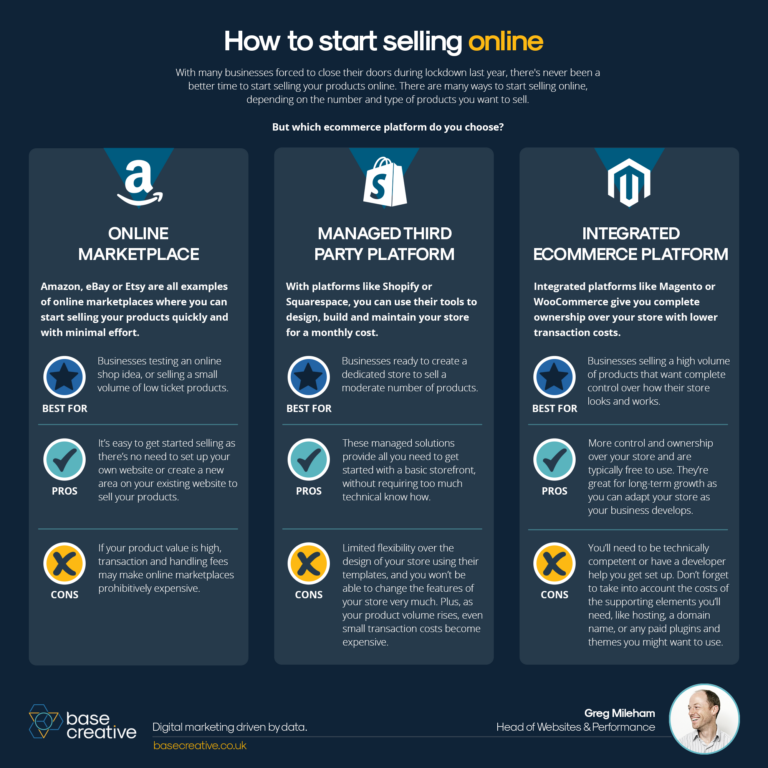
Get the download
To download our ecommerce platform infographic, click the button below.

Not sure where to start selling your products online? Follow our guide to help you find the best ecommerce platform for your business.

To download our ecommerce platform infographic, click the button below.
The trend for shopping online has risen significantly in the last few years, with the value of UK online retail sales estimated at £99 billion in 2020 alone – a trend that’s expected to continue rising as more consumers start shopping this way. Selling online is easier than you think, especially if your virtual storefront is designed with your customers in mind.
There are many ways to start selling online, depending on the number and type of products you want to sell. Selling your products through an online marketplace is a great way to test your idea without taking on too much risk. However, if you want full control over your sales, have outgrown the marketplace, or want a larger cut of the profits, it makes sense to start a store of your own.
Follow our guide to help you find the best ecommerce platform for your business:
To test your online shop idea, or if you expect to sell a low volume of products initially, try an online marketplace like Amazon, eBay or Etsy before investing in a full ecommerce platform.
Once you’re ready to create a dedicated store, you can choose a managed third party platform like Shopify or Squarespace. You can use their tools to design, build and maintain your store within their ecosystem, for a monthly cost (plus transaction fees).
If you expect a large volume of sales, would like to keep transaction costs down, and would like more control over how your store works, you should consider an integrated platform like WooCommerce or Magento which gives you complete ownership over your store. While the ecommerce platforms here are often open source (and therefore free to use), you’ll have to factor in the costs of hosting and maintaining your website. Plus, they are designed to be used by those who have some technical expertise.
Ready to start selling online? Our websites & performance team can help you get your store built in a way that suits your business model and level of technical expertise, from set up to ongoing support and maintenance. Through our search engine visibility and social media engagement services, we can also help you promote your store and products to your ideal customers.
For more help with selling your products online, email me at [email protected].
View our other content here
This guide breaks down all the social media image and video sizes you need to know, including LinkedIn, Instagram, Facebook, X (formerly Twitter), YouTube, Pinterest, TikTok and Google Business Profile.
This guide breaks down all the social media image and video sizes you need to know, including LinkedIn, Instagram, Facebook, Twitter, YouTube, Pinterest, TikTok and Google Business Profile.

Whether it’s a tip on how to do something (just like this post!) or an answer to a popular question within your industry, the best blog posts are the ones that provide real value to their readers. So, if you’re wondering what to include in your next blog post (or 10), here’s how to come […]

Lack of time is often the reason accountancy firms don’t market their business, so in this guide, Base Creative shares easy time-saving strategies that all firms can introduce, including automation and content repurposing. In this guide, Base Creative explores: How much time should you spend on marketing Automation in marketing How you can repurpose content […]
